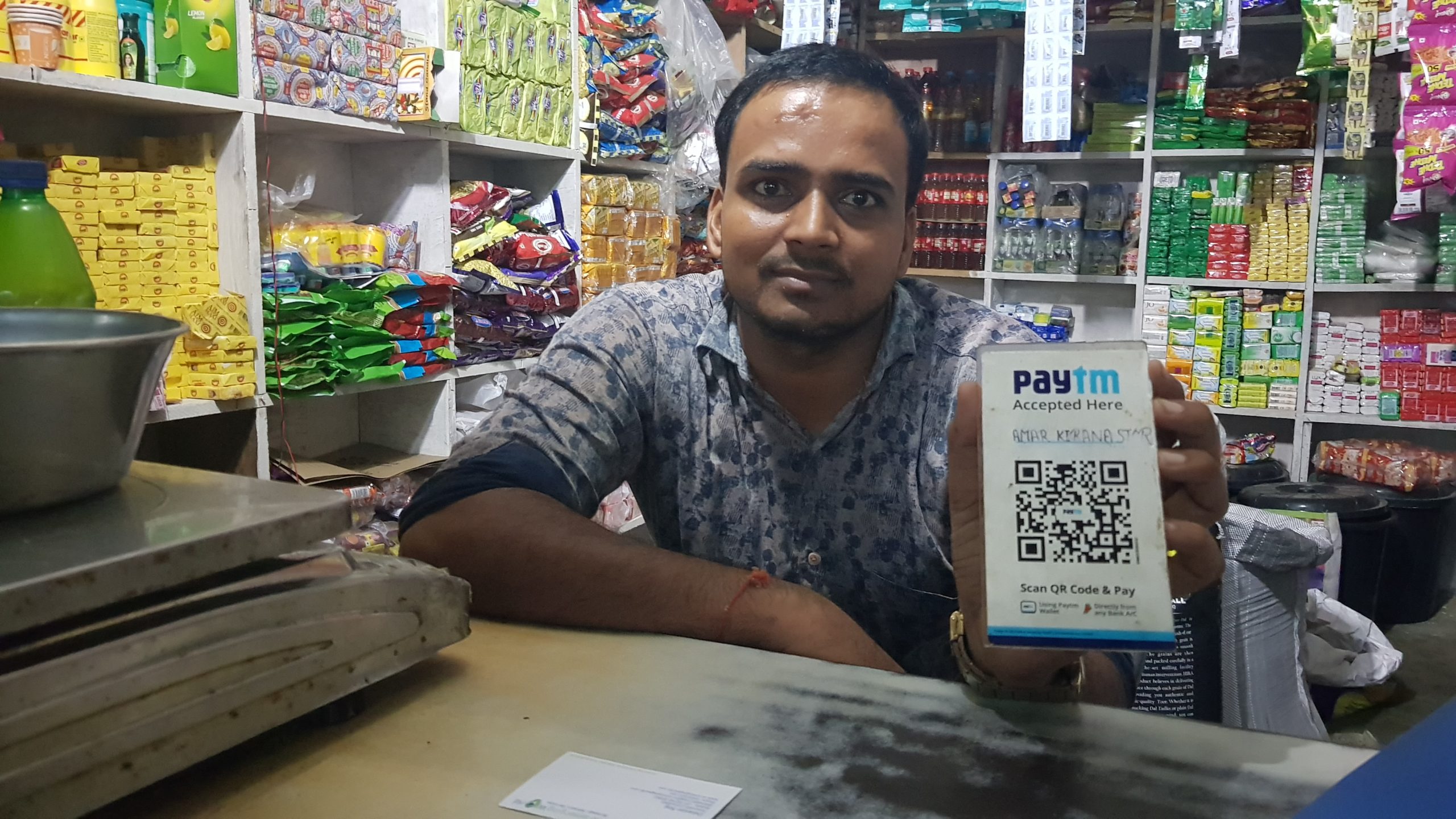Three Factors which are Driving Digital Payments uptake among Urban Kirana Stores in India

Kirana stores are traditional neighbourhood shops in India, selling everything from groceries to branded consumer goods. There are almost 15 million of them in the country and have always been cash led businesses. However, in the last 3 to 4 years, Kirana stores, especially in urban and semi-urban areas, have started to accept payments digitally. But what triggered this transition?
In 2016, demonetization of INR 500 and INR 1,000 banknotes triggered a bullish market entry for a host of private fintech companies providing digital payment services. At a time when most Indian consumers had lesser cash in hand and were braving long ATM queues, digital payment apps managed to address the core pain areas of the payers. On the other hand, Kirana stores being a cash reliant business were affected due to reduced cash in the hand of the consumers during this time. Starting to accept digital payments made business sense for them.
Three years have passed since then, and consumers have restored cash liquidity. Still, many urban and semi-urban Kirana stores continue to accept digital payments. Why?
Here are three factors which are driving digital payments among urban Kirana stores in India.
1.Bold Cashless Policies by the Government: Since 2015, the Government of India has been taking bold steps under the aegis of Digital India is rapidly transforming the digital landscape of the country with a significant focus in enabling the digital payments ecosystem.
A report by Centre for Digital Financial Inclusion and Digital Innovation Lab IIM Bangalore mentions, post demonetization 63% of the Kirana stores, especially in the tier 2/3 markets and semi-urban areas, wanted to go cashless and 43% intended to purchase a POS machine.
In 2017, National Payments Corporation of India (NPCI) launched Bharat QR, a low-cost world’s first of its kind interoperable payments solution for which merchants could display only one QR code at the storefront.
Earlier this year, the Government has eliminated Merchant Discount Rates (MDR) – the charge for accepting electronic payments levied on merchants by banks as payments are processed for NPCI enabled e-payment options like UPI and RuPay Debit Cards.
2.Private Sector assisted Digital Payments Adoption: Leading corporates in India are transforming Kirana stores under their network from accepting cash to digital payments. For example, Reliance Retail is distributing Jio Infocomm’s low-cost MPoS machines to Kirana stores under its network and is aiming to digitize 5 million Kirana stores by 2023.
Another retail giant, Metro Cash and Carry, has partnered with fintech start-up ePayLater to co-create a mobile application, “Digital Shop”, which Kirana owners can use to digitally track sales, manage inventory, place orders and offer digital payment options to customers. Metro launched this pilot in May 2019, and the initiative has digitised about 8000 small traders and Kirana stores across India.
Walmart, in partnership with PhonePe, is transforming 1 million member Kirana Stores registered with Walmart’s best price stores with a view to accepting UPI payments. This support is enabling Kirana stores digitize their payment transactions both while accepting from their consumers and paying for their stock purchases.
3.Strong Market Penetration Strategy by Fintech Companies: Over the last few years, every major Fintech player has wanted a share in the digital payments pie. The aggressive market penetration strategy reflects on the storefront of every Kirana store with QR Codes from multiple digital payments apps. As a result, the top players have raked in significant merchants on their platform. Today, while Paytm has 14 million merchants on its platform, PhonePe has 8 million and Google Pay has 5 million. With wallet-based payments losing relevance, UPI fintech platforms are going to battle it out in the coming days.
In conclusion, an encouraging digital policy climate in conjunction with the private sector and fintech firm led efforts is driving the uptake of digital payments among Kirana stores. However, the change is more visible in urban than in rural. To include the rural Kirana stores in this digital transition story a) the fintech firms should have a separate rural penetration strategy, b) the private sector should explore awareness and behavior change campaigns for their network of Kirana stores and c) the Government should ensure banking and financial services to be conducive to accepting digital payments.










